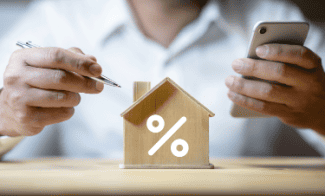The Big Apple’s Big Squeeze on Pollution and Landlords

Local Law 97—or LL97, for short—works by setting emissions caps on buildings that are larger than 25,000 square feet, which amounts to “nearly 60 percent of the city’s building area.” These caps will become enforceable in 2024 and grow stricter over time.
Environmental groups view LL97 as a “tremendous leap forward.” Real estate executives, however, have opposed the ordinance because of the financial burden it places on landlords. If their buildings do not comply with LL97’s emissions caps, landlords will face a civil penalty. For example, the realty group that owns the Empire State Building would be subject to a multimillion dollar fine if it fails to reduce the building’s carbon emissions sufficiently by 2030. Collectively, landlords will have to invest up to $21.6 billion in retrofitting costs by 2034 for their buildings to meet the ordinance’s emissions restrictions.
LL97 takes a significant step toward New York State’s net-zero emissions goal. It also shows how cities, without any federal oversight, can align with the Paris Climate Agreement, to which Mayor Bill de Blasio committed New York City in 2017. For example, LL97’s emissions caps get stricter over time, which mirrors the Paris Agreement’s own requirements for ongoing improvements.
LL97 exempts otherwise carbon-intensive public housing and some rent regulated housing from the ordinance’s emissions caps. But real estate industry executives argue that owners of the city’s remaining non-exempt buildings are unfairly targeted. The general counsel for the Real Estate Board of New York expressed concern that the ordinance would discourage landlords from leasing to media, technology, or life sciences companies, since these businesses use more energy.
Landlords also point out that there simply is not enough time to retrofit their buildings by 2024, when LL97’s emissions caps come into force. In addition, the COVID-19 pandemic has delayed the launch of the city’s low-interest loan program, which was designed to help landlords afford such retrofits. One real estate trade association executive does not expect the city to recommend how landlords should reduce their building’s carbon emissions until 2022. In turn, the executive said, landlords are unwilling to risk investing in costly improvements that may ultimately be unacceptable under LL97.
But on the other side, environmentalists are not the only ones supporting LL97. Residents of the city’s chronically under- or overheated buildings will benefit from the thermostats, new windows, and modern boilers that LL97 requires landlords to install. Yet LL97 gives renters at least two more reasons to rejoice.
First, the ordinance’s emissions caps will push landlords to address the city’s most common apartment maintenance complaints, including drafty windows, heat or hot water issues, and cooking gas shutoffs. Many of the city’s older apartment buildings also lack modern boilers or thermostats, so tenants keep their windows open—even in the middle of winter—because their radiators are always working at full steam. LL97 requires landlords to replace these boilers and install thermostats to reduce their buildings’ carbon footprint.
Second, the ordinance could also encourage developers to build additional apartment buildings following “passive house principles.” These principles include using specialized insulation, construction, and airflow techniques that can reduce a building’s energy use by 80 percent and cut tenants’ utility bills in half. The city has multiple passive house buildings under construction that would not only comply with LL97, but would also be affordable for lower-income tenants.
Nevertheless, the real estate industry backed New York Governor Andrew Cuomo’s recent budget proposal, which would have put a loophole into LL97. Under the proposed provision, landlords could have avoided investing in their buildings to meet LL97’s emissions caps by instead purchasing renewable energy credits from upstate solar and wind farms. This would have sidestepped LL97’s point, which is to reduce the city’s carbon footprint by lowering emissions from buildings. The proposal fizzled after fierce opposition from environmental groups.
As the threats posed by climate change become more urgent and more expensive, other cities that are vulnerable to its effects may pass ordinances like LL97 to lower emissions. As recently as 2012, Superstorm Sandy cost New York $19 billion in damages. Officials from Boston’s Environment Department are “closely monitoring” LL97 as a potential model for future policy responses to such climate-related disasters.
On the other hand, passing too many costs on to building owners could motivate them to push legislatures to dilute ordinances like LL97, as owners have in New York State. Expanding the availability of low-interest loans, as the New York has done, or providing more room for emissions limits to be adjusted may make ordinances like LL97 appear more even-handed or feasible to implement.
It remains to be seen, of course, whether LL97 will achieve its emissions reduction goal while also making New York City a more livable place for renters.















 Accessibility
Accessibility